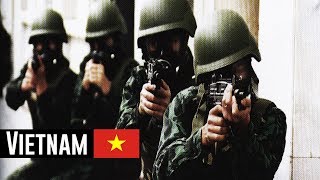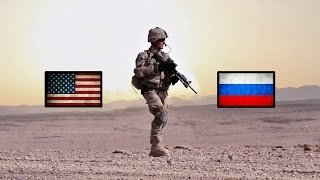Sunday, 02 November, 2025г.
















Где искать: по сайтам Запорожской области, статьи, видео ролики
пример: покупка автомобиля в Запорожье
The Vietnam War - 1st Infantry Division_Full Length Historical Documentary_Combat Footages in Color
● Please SUPPORT my work on Patreon: https://bit.ly/2LT6opZ
● Visit my 2ND CHANNEL: https://bit.ly/2ILbyX8
►Facebook: https://bit.ly/2INA7yt
►Twitter: https://bit.ly/2Lz57nY
►Google+: https://bit.ly/2IPz7dl
✚ Watch my "Vietnam" PLAYLIST: https://bit.ly/2IN26mj
The video presents the major battle actions of the 1st Infantry Division in Vietnam, as well as some of their civic action projects there.
The original title of this video is: First Infantry Division in Vietnam (1971). The documentary is a part of "The Big Picture" series produced by the U.S. Army.
About the 1st Infantry Division:
The 1st Infantry Division of the United States Army is the oldest division in the United States Army. It has seen continuous service since its organization in 1917. It was officially nicknamed the The Big Red One after its shoulder patch and is also nicknamed The Fighting First. However, the division has also received troop monikers of The Big Dead One and The Bloody First as puns on the respective officially-sanctioned nicknames. It is currently based at Fort Riley, Kansas. http://en.wikipedia.org/wiki/1st_Infantry_Division_(United_States)
About the Vietnam War:
The Vietnam War was a Cold War-era military conflict that occurred in Vietnam, Laos, and Cambodia from 1 November 1955 to the fall of Saigon on 30 April 1975. This war followed the First Indochina War and was fought between North Vietnam, supported by its communist allies, and the government of South Vietnam, supported by the United States and other anti-communist countries. The Viet Cong (also known as the National Liberation Front, or NLF), a lightly armed South Vietnamese communist common front directed by the North, largely fought a guerrilla war against anti-communist forces in the region. The Vietnam People's Army (North Vietnamese Army) engaged in a more conventional war, at times committing large units into battle. U.S. and South Vietnamese forces relied on air superiority and overwhelming firepower to conduct search and destroy operations, involving ground forces, artillery, and airstrikes.
The U.S. government viewed involvement in the war as a way to prevent a communist takeover of South Vietnam as part of their wider strategy of containment. The North Vietnamese government and Viet Cong viewed the conflict as a colonial war, fought initially against France, backed by the U.S., and later against South Vietnam, which it regarded as a U.S. puppet state. American military advisors arrived in what was then French Indochina beginning in 1950. U.S. involvement escalated in the early 1960s, with troop levels tripling in 1961 and tripling again in 1962. U.S. combat units were deployed beginning in 1965. Operations spanned international borders, with Laos and Cambodia heavily bombed. American involvement in the war peaked in 1968, at the time of the Tet Offensive. After this, U.S. ground forces were gradually withdrawn as part of a policy known as Vietnamization. Despite the Paris Peace Accords, signed by all parties in January 1973, fighting continued.
U.S. military involvement ended on 15 August 1973 as a result of the Case--Church Amendment passed by the U.S. Congress. The capture of Saigon by the Vietnam People's Army in April 1975 marked the end of the war, and North and South Vietnam were reunified the following year. The war exacted a huge human cost in terms of fatalities. Estimates of the number of Vietnamese soldiers and civilians killed vary from 800,000 to 3.1 million. Some 200,000--300,000 Cambodians, 20,000--200,000 Laotians, and 58,220 U.S. service members also died in the conflict.
Nixon Doctrine / Vietnamization:
Severe communist losses during the Tet Offensive allowed U.S. President Richard Nixon to begin troop withdrawals. His plan, called the Nixon Doctrine, was to build up the ARVN, so that they could take over the defense of South Vietnam. The policy became known as "Vietnamization". Vietnamization had much in common with the policies of the Kennedy administration. One important difference, however, remained. While Kennedy insisted that the South Vietnamese fight the war themselves, he attempted to limit the scope of the conflict.
Nixon began to pursue détente with the Soviet Union and rapprochement with the People's Republic of China. This policy helped to decrease global tensions. Détente led to nuclear arms reduction on the part of both superpowers. But Nixon was disappointed that the PRC and the Soviet Union continued to supply the North Vietnamese with aid.
Beginning in 1970, American troops were being taken away from border areas where much more killing took place, and instead put along the coast and interior, which is one reason why casualties in 1970 were less than half of 1969's totals.
http://en.wikipedia.org/wiki/Vietnam_War
First Infantry Division in Vietnam (1971)
Теги:
Crimes Air Force USA Secret Cold Vietnam Against Military Weapon Johnson Victory Socialism States Anty Defeat America Russia China Asia Socialist Navy Video Bombing Documentary Peace Front Nam Guerrilla North Campaign Battle Watch Anti Offensive Film Communist Vietcong Indochina Combat Power Game History War Music Viet Force Helicopter Movie CIA Humanity Jungle Full Battlefield Kennedy U.S. Laos Army Nuclear Cambodia United Nixon South Color Raw Hell Song Mission Marine YouTube Footage
Похожие видео
Мой аккаунт


 У вашего броузера проблема в совместимости с HTML5
У вашего броузера проблема в совместимости с HTML5


